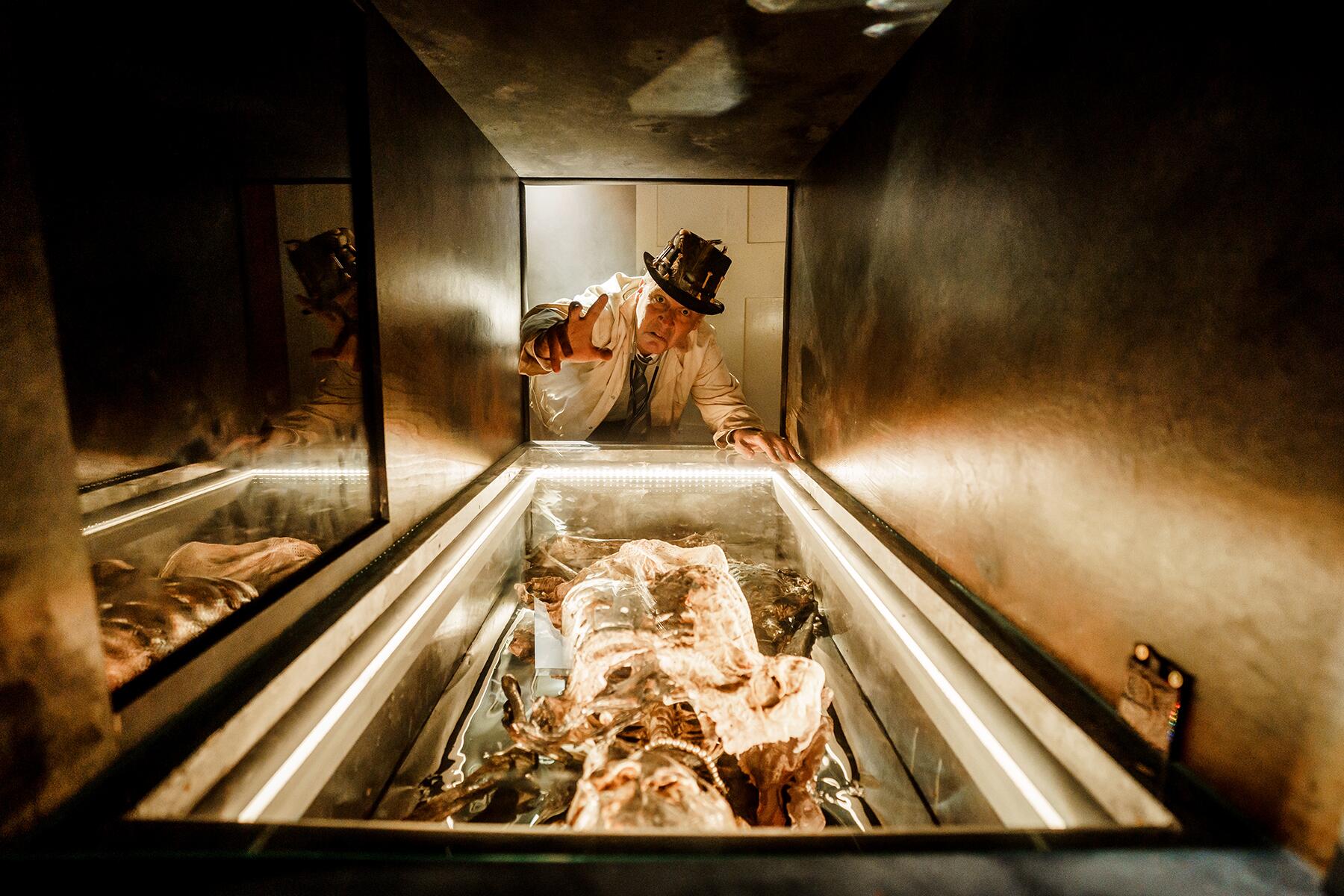A new museum celebrating Mary Shelley's Frankenstein, the world’s first science fiction novel, has opened in Bath, England.
There’s something quite unsettling about the house at 37 Gay Street in Bath, England. A feeling between anticipating the unexpected, sensing the unknown, and raw curiosity about one of the world’s most famous novelists. Located in one of the most high-profile Regency streets in the city, the new House of Frankenstein museum is two doors from the Jane Austen Centre but a world away in literary thought. Decked out in steampunk and gothic style decor, this new museum offers a different perspective on Bath’s cultural heritage. So, what are the connections between Frankenstein and Bath?
Mary Godwin was just 18 when she scandalously eloped with the poet Percy Bysshe Shelley. The pair famously joined Lord Byron and John Polidori on Lake Geneva in 1815. A storm inspired Byron to challenge the party to write a ghost story. John Polidori created the literary concept of vampires with his tale, The Vampyr, but Mary imagined her monster. Shelley encouraged Mary to develop the character further, and when they arrived in Bath in 1816, she focused on her novel, Frankenstein. The couple married in December of 1816.
Mary Shelley lived at 5 Abbey Gardens near Bath Abbey, which has since been demolished to form the Pump Rooms. A simple plaque was erected in 2018 and until now was the only sign she created Frankenstein in the city or even lived there. Mary frequently attended lectures on the concept of electricity and its effect on nature by Dr. Wilkinson in Bath, which she used to develop her characters. By coincidence, the area beneath her former home is now an electricity sub-station supplying the city with power. The building at 37 Gay Street has no connection to Mary Shelley, but number six opposite was home to the diarist, Mrs. Piozzi, an authority on 18th-century life. She wrote to a friend: “Lord bless me! That hideous tale Frankenstein was done, it seems, by Miss Godwin.”
Recommended Fodor’s Video
The New House of Frankenstein
House of Frankenstein co-founder, Jonathan Willis, has spent much of the pandemic lockdown working on completing the museum. “I have been doing entrepreneurial stuff for years,” explains Willis. “So many don’t work, especially in the film and theater industry, which is my background. But others like this just do serendipity.”
A creative team has been working on the house, which had previously been a solicitor’s office for 200 years. The work has taken longer as it is a listed building and required considerable meetings with the city planning department. The pandemic also resulted in delays with restrictions during the lockdown.

“Everybody has been happy to input their ideas,” says Willis. Dick Daniels was putting the finishing touches on a ceiling as I toured the room. He brings expertise from his previous work establishing the London Dungeon. Co-founder Chris Harris has spent years in the theater industry, and all this has brought alchemy of creative thought into the new museum. Vicki Smith has been managing the project and kept all the threads together.
The museum sets out to commemorate the life of Mary Shelley and the creation of her novel, which has never been out of print since it was published anonymously in 1818. It is laid out on four floors, and the team has had to work within the constraints of a listed 200-year-old building. If anyone visiting the House of Frankenstein is expecting it to revolve around a green Boris Karloff lookalike with a bolt through its neck, they might be disappointed (although that version is on display)–that familiar characterization was linked to the iconic 1930s movie. When people come to the House of Frankenstein, they will be experiencing a world-first because the monster imagined by Mary Shelley has been re-created for the first time, just as she described it. From the novel, we know the creature was eight feet in height and has a yellowish color. He’s also intelligent and self-taught.
The rooms are designed to include the historical, cultural, and literal aspects of Frankenstein but are also intended to be a little scary. Some rooms have a certain smell to them to add to the atmosphere. Think formalin in the laboratory area or popcorn in the popular culture rooms. A series of hollusions (images projected from behind on mesh) and sensors will give people a personalized scary experience. “No one is going to walk out of this and say, ‘That’s what I expected,’” adds Willis.
The first floor sets out the early life of Mary and the creation of her novel. The suitably named Mourning Room—veiled in black lace with ghoulish pictures on the walls—alludes to the deaths of her children, her mother, and Percy Bysshe Shelley in 1822, just six years after they married. Her time in Bath was a dark one as she hid from scandal. I was intrigued to discover she named the inventor Victor, which was Shelley’s pen name. She also wrote The Last Man, which eerily revolves around a global pandemic in the 21st-century.

There’s an interactive room linked to her fascination with electricity and lightning. An ominous-looking laboratory area is designed to be somewhat menacing in the background. There will be local actors in the building to entertain and subtly scare the unwary. It’s all part of the experience.
I’m fascinated with the animatronic beast created especially for the museum. It has a yellowish tinge and breathes while glaring with intent designed to intimidate. If you stare too long, its eyes follow you around the room.
In the attic, a special effects team is completing a 14 clue escape room. Visitors have an hour to solve the clues and escape before the mad scientist finds them. But it’s the basement I find the most chilling. The vaulted ceiling shows the age of the building and it’s significantly colder in here. It’s followed by a caged actor, a sinister crawl-through area to get out, and a surprise for those who think they have seen it all before. It wouldn’t be right to reveal all the secrets beforehand.
The House of Frankenstein is not suitable for children under 12 years old. The building has limits because of its age, so it is not wheelchair-friendly. However, the team aims to introduce a virtual reality experience on the ground floor for people with limited mobility. They also plan to open a themed cafe (Scary Mary’s) and have a monster ball in Bath to celebrate Halloween starting in 2022. The team has a range of creative ideas based on Frankenstein and wants to go global with the museum concept. As I leave the House of Frankenstein, I reflect on what I learned about Mary Shelley and her life. I’m also strangely compelled to return once more to see the creature and its peculiar surroundings.




